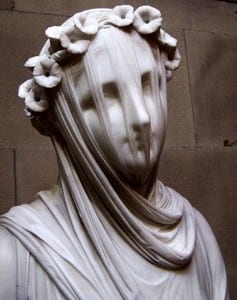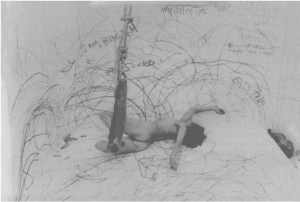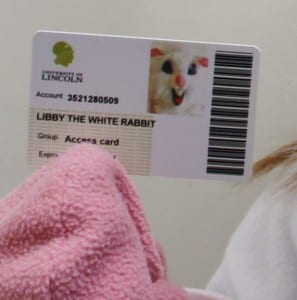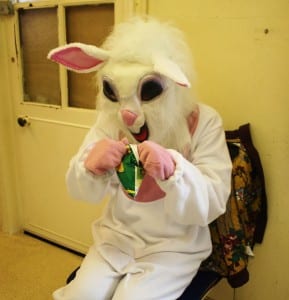The extra space which we have in the main bedroom, the huge cupboard, has been a source of much debate in our group.
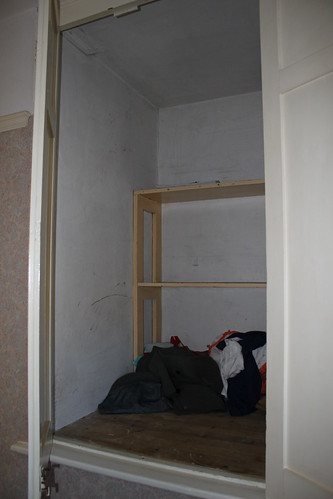 Taken 01/02/2013 by Jozey Wade
Taken 01/02/2013 by Jozey Wade
It has been a sticking point for our performance in terms of its best usage. It is a space too powerful to abandon but also very difficult to incorporate into a piece centred in a bedroom. We have recently, however, come upon a use for the space which fits perfectly into our theme of mixing childhood and adulthood. The cupboard will be an ultra sexual space in which there will be a naked female. A submissive female to be more precise. She will be tied up, covered in baby oil and gagged. We hope that the cupboard will show very vividly the sexual nature of the bedroom.
When this idea was first discussed we were unsure, firstly, whether the sex of the submissive would change the way in which our Voyeur reacted to them. And secondly what the differing reactions would entail and whether this would lead our performances in a different direction. Toepfer believes that “even to an entirely female audience, female performers who expose their breasts will appear more “naked” than male performers who expose their bare chests” ((Toepfer, Karl (1996) ‘Nudity and Textuality in Postmodern Performance’, Performing Arts Journal, 18 (3) September: pp.76-91. P.76)) following this believe we thought that it would be best, in the sense of getting a greater reaction from our Voyeur, to have female performers naked in the cupboard.
The idea to have a naked female in the cupboard was always to push boundaries, for an audience to see something out of the ordinary. By no means did we think that an audience would see something completely original as there have been performances such as the work of Carolee Schneemann which have included female nudity. However we did want something which would come as a shock to our Voyeur. Rupert Everett’s statements in an interview for the BBC are therefore quite worrying, he says that “in the old days it (nudity) used to throw an uneasy frost across an auditorium but these days I think people really enjoy it and we got a lot more bums on seats because of the nudity – bums on seats and bums on stage” ((Masters, Tim (2013) Actors reveal challenges of stage nudity, Online: http://www.bbc.co.uk/news/entertainment-arts-21654036 accessed 11 March 2013)) this begs some questions for our piece. Is the nudity going to have the effect which we desire it to? And will our audience be shocked by the nudity or will it simply become something which they would expect when coming to view a bedroom performance?
The nudity that we were showing had to have something which was more than simple just a naked human body. The nakedness had to be just one part of a much larger character which we were building. Returning to Toepfer he says that “the voice is as much a part of the body as any organ, and the capacity of a body to speak means that a completely unclothed body, with genitals exposed, can become more “naked” or signify even greater vulnerability by speech emanating from it, speech addressed to it, or speech about it” ((Toepfer, Karl (1996) ‘Nudity and Textuality in Postmodern Performance’, Performing Arts Journal, 18 (3) September: pp.76-91. P.77)). Using the voice on top of and in relation to the naked human body makes the naked form far more powerful to our Voyeur.
Following this idea we have incorporated a headphone system. The Voyeur will be told to put the headphones on immediately they enter the room and will be read a narrative by the naked woman in the cupboard. It is a narrative which only they will be able to hear. There are two narratives, differing for the sexes. The male narrative is more explicit while the female looks for understanding and sympathy.
The voyeur will have the nakedness of the woman attacking two of their senses simultaneously. They will be completely consumed by the woman in the cupboard, developing emotions towards her, whatever these may be. We hope to make it an extremely personal experience which the Voyeur will be sharing with the naked performer.
